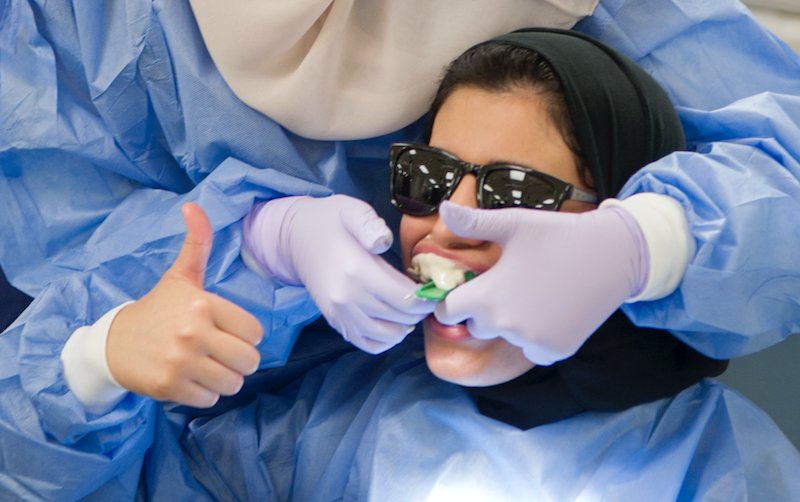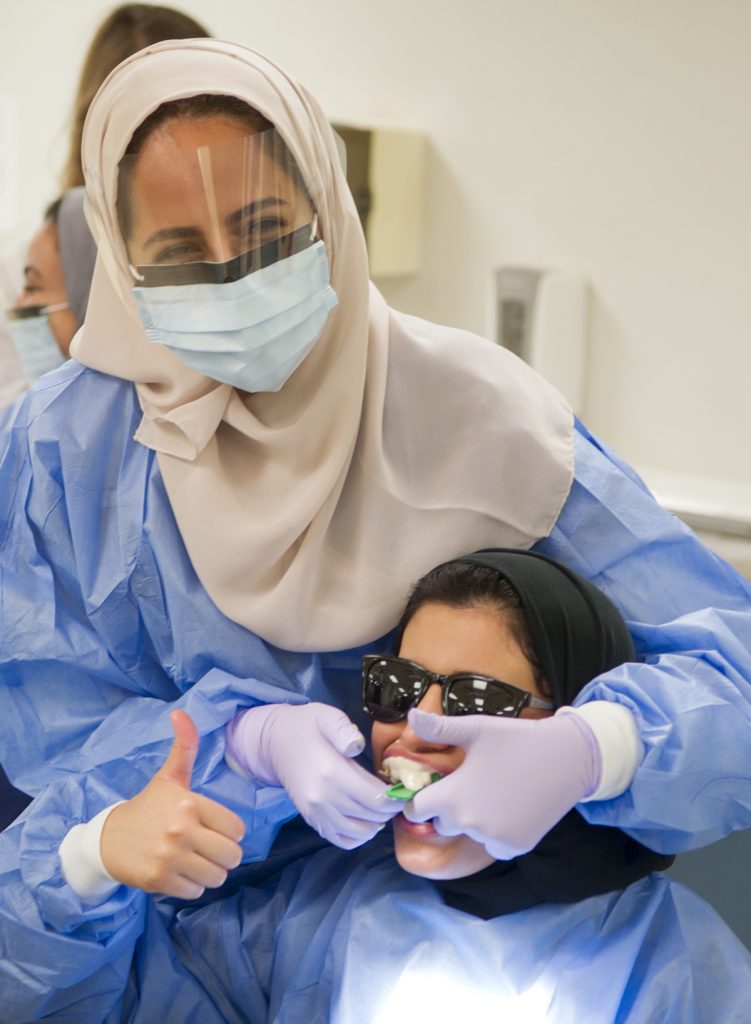Dental education from a different perspective

“Amazing and beneficial” are words Alhanouf Alhulayyil, a student at the all-female Princess Nourah bint Abdulrahman University (PNU) College of Dentistry in Saudi Arabia, uses to describe her past two weeks at Texas A&M College of Dentistry.
Through the college’s International Dental Student Summer Enrichment Program, she and four other PNU dental students have observed U.S. dental education up close, rotating through clinics and participating in hands-on sessions with CAD/CAM, implants and mouthguards.
“When I went to the graduate departments, it was really educational,” Alhulayyil says. “In periodontics I saw a case where a resident, Dr. Stephanie Briggs, was doing bone grafting, and she explained everything. Even in oral and maxillofacial surgery, I observed faculty member Dr. Roy Kendrick, and he taught me a lot.”

The Saudi students attended a forensics lecture by Dr. Shirley Lewis-Miranda, director of the international program and clinical assistant professor in public health sciences, and a pathology lecture with Dr. John Wright, Regents Professor and head of diagnostic sciences. They visited the Agape Clinic, one of the college’s community clinic training sites, and participated in national dental examination preparation sessions.
Interacting with Texas A&M dental students during clinical rotations revealed treatment-planning differences between the Saudi and U.S. schools, variances in physical clinic arrangements and exposure to different devices, says Alhulayyil.
“We don’t use loupes at all in my university, so that was quite good,” she says, referring to the magnifying glasses commonly used in clinical dentistry.
“I like how the clinics are arranged here. At home we don’t have special clinics for residents and undergrads; they are all mixed. I also like how the students can depend on themselves, grab instruments by themselves; back home we have assistants who bring them to us.”
Dr. Amanda Muns, clinical assistant professor in restorative sciences and the program’s assistant director, witnessed its impact on the participants.
“It excites me to see students so enthused about new procedures they’ve observed or techniques they’ve learned here in a U.S. dental school,” Muns says. “This is an opportunity for dental students from different nations to share learning experiences, culture, knowledge and ideas.”
For Alhulayyil and her fellow students, the program’s completion is not the end of the experience.
“I will take back home so many memories,” she says.